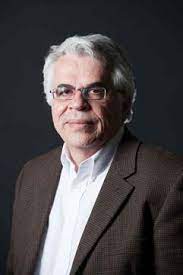
- This event has passed.
MEAM Seminar: “Biomimetic Design of Marine Robots and Sensors”
March 29, 2022 at 10:00 AM - 11:30 AM
Inspiration from animal function can lead to effective design of engineered systems. Ocean systems benefit especially as operation in a heavy medium such as water imparts significant forces. We provide two examples of biomimetic design. In the first example, morphing fins inspired from tunas are used to dynamically change the directional stability qualities of rigid hull vehicles, enabling ultra-rapid maneuvering when deployed, while ensuring stable locomotion when retracted. Morpheus, a one-meter-long autonomous vehicle, developed with Lockheed Martin Corp. funding, demonstrated the maneuvering performance enhancement in the field. In the second example, sensors inspired from the vibrissae of sea lions exhibit great sensitivity to even minute turbulent flows, enabling the detection of plumes and underwater navigation in cluttered environments. Finally, we discuss how Machine Learning applied to experimental testing adds a new capability to underwater robotic system development.

Michael S. Triantafyllou
Henry L. and Grace Doherty Professor in Ocean Science and Engineering, Massachusetts Institute of Technology
Michael Triantafyllou is the Henry L. and Grace Doherty Professor in Ocean Science & Engineering in the Department of Mechanical Engineering at the Massachusetts Institute of Technology and the Director of the MIT Sea Grant Program. He teaches and has published in the areas of biomimetics, dynamics and control of marine systems, cable mechanics, and experimental fluid mechanics. He pioneered the development of science-driven biomimetic robots to study the basic mechanisms of flow control that lead to the outstanding agility of fish and cetaceans. The RoboTuna original design is at the Science Museum in London, while a second version of the robot is on exhibit at the MIT Museum. He is currently studying the physics of flow sensing and morphing fins in fish and marine mammals to achieve super-maneuverability in ocean vehicles, and the application of Machine Learning methods to flow-structure interaction problems.
